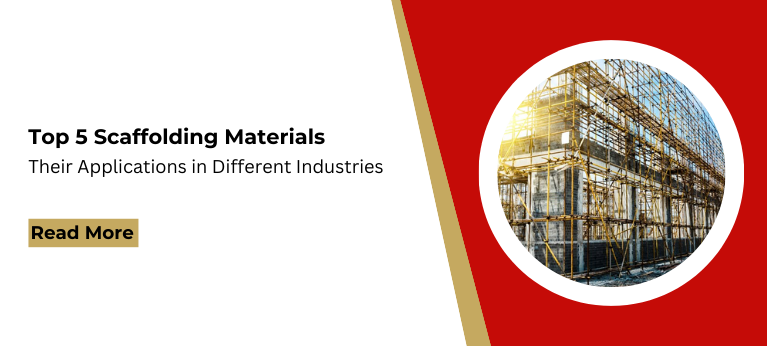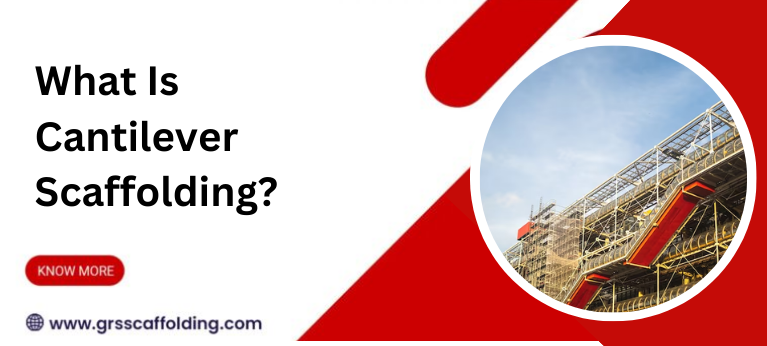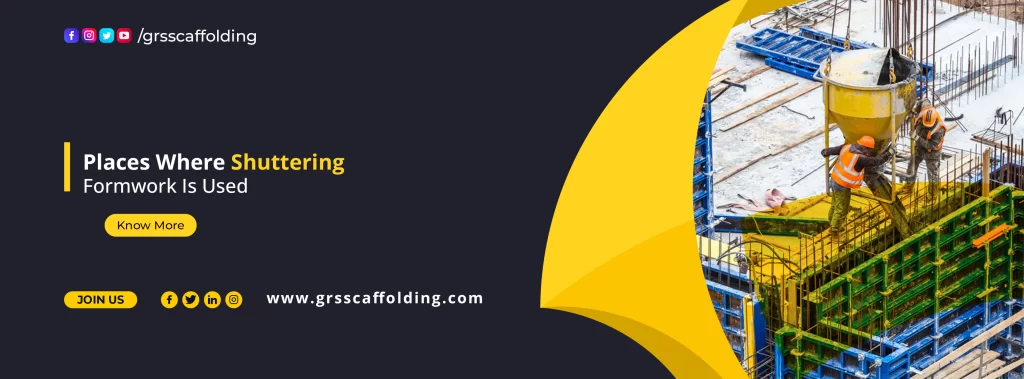Scaffolding plays a crucial role in construction and maintenance, providing temporary structures to support workers and materials. The choice of scaffolding material depends on various factors, including the project’s nature, safety requirements, and environmental conditions.
Here’s an in-depth look at the top 5 scaffolding materials and their applications across different industries.
1. Steel Scaffolding:
Steel scaffolding is the most common and widely used type of scaffolding material. It is known for its strength, durability, and ability to support heavy loads. Steel scaffolding typically consists of tubular steel pipes and fittings that are assembled to create a stable platform.
Applications:
- Construction: Steel scaffolding is extensively used in high-rise building construction due to its strength and ability to bear heavy loads.
- Industrial Maintenance: It is used for maintenance and repair work in industrial plants, including power stations and refineries, where heavy equipment and machinery require access.
- Bridges and Highways: Steel scaffolding supports bridge construction and highway repair projects, providing access for workers to high and difficult-to-reach areas.
Advantages:
- High load-bearing capacity
- Long-lasting and resistant to wear and tear
- Suitable for various weather conditions
Disadvantages:
- Heavier and more challenging to transport
- Requires regular inspection and maintenance
2. Aluminum Scaffolding:
Aluminum scaffolding is known for its lightweight nature and ease of assembly. It is constructed from aluminum tubes and fittings, making it a popular choice for projects requiring frequent mobility and quick setup.
Applications:
- Residential Construction: Ideal for small to medium-sized residential projects where ease of mobility and quick assembly are crucial.
- Retail and Commercial Projects: Used in shopping malls, office buildings, and other commercial spaces for maintenance and renovations.
- Events and Exhibitions: Perfect for setting up stages, booths, and displays due to its lightweight and portable nature.
Advantages:
- Lightweight and easy to transport
- Quick and simple assembly
- Corrosion-resistant
Disadvantages:
- Lower load-bearing capacity compared to steel
- More susceptible to damage from impact
3. Wooden Scaffolding:
Wooden scaffolding, also known as timber scaffolding, is one of the oldest forms of scaffolding. It uses wooden planks and beams, often supported by metal fittings, to create temporary structures. While less common today, it is still used in certain scenarios.
Applications:
- Historical Restoration: Employed in the restoration of historical buildings and monuments where preserving traditional methods is essential.
- Residential and Small-Scale Projects: Used in smaller construction projects and renovation work where high loads are not a concern.
- Scenic and Theatrical Productions: Utilized for building sets and stage structures in the entertainment industry.
Advantages:
- Cost-effective
- Easily customizable
- Good for projects with low load requirements
Disadvantages:
- Less durable and prone to deterioration over time
- Requires more maintenance and inspection
4. Fiberglass Scaffolding:
Fiberglass scaffolding is made from fiberglass-reinforced plastic (FRP), offering a combination of strength and lightweight properties. It is non-conductive, making it ideal for specific applications where electrical hazards are a concern.
Applications:
- Electrical Work: Essential in electrical and power line maintenance due to its non-conductive properties.
- Chemical Plants: Used in environments where exposure to corrosive chemicals could damage other materials.
- Oil and Gas Industry: Applied in areas where non-conductive and corrosion-resistant scaffolding is required.
Advantages:
- Non-conductive, safe for electrical work
- Corrosion-resistant and durable in harsh environments
- Lightweight and easy to handle
Disadvantages:
- More expensive compared to other materials
- Limited load-bearing capacity
5. Copper Scaffolding:
Copper scaffolding, though less common, offers unique benefits due to its anti-corrosive properties and aesthetic appeal. It is often used in specialized applications where appearance and corrosion resistance are critical.
Applications:
- Historic Building Renovations: Utilized in the renovation of historic buildings where maintaining the integrity of original materials is essential.
- Art Installations: Used in the creation of large art installations and structures where aesthetics are a key consideration.
- Architectural Projects: Applied in high-end architectural projects that require both functionality and visual appeal.
Advantages:
- Excellent resistance to corrosion
- Aesthetic appeal
- Suitable for specialized and high-end projects
Disadvantages:
- High cost
- Limited availability and use
Conclusion:
Choosing the right scaffolding material is crucial for ensuring safety, efficiency, and effectiveness in various industries. Steel scaffolding remains the go-to for heavy-duty applications, while aluminum offers mobility and ease of assembly.
Wooden scaffolding, though traditional, still serves specific needs, while fiberglass and copper provide unique benefits for specialized tasks. By understanding the properties and applications of these materials, professionals can select the most suitable scaffolding solutions for their projects, ensuring both safety and success.



